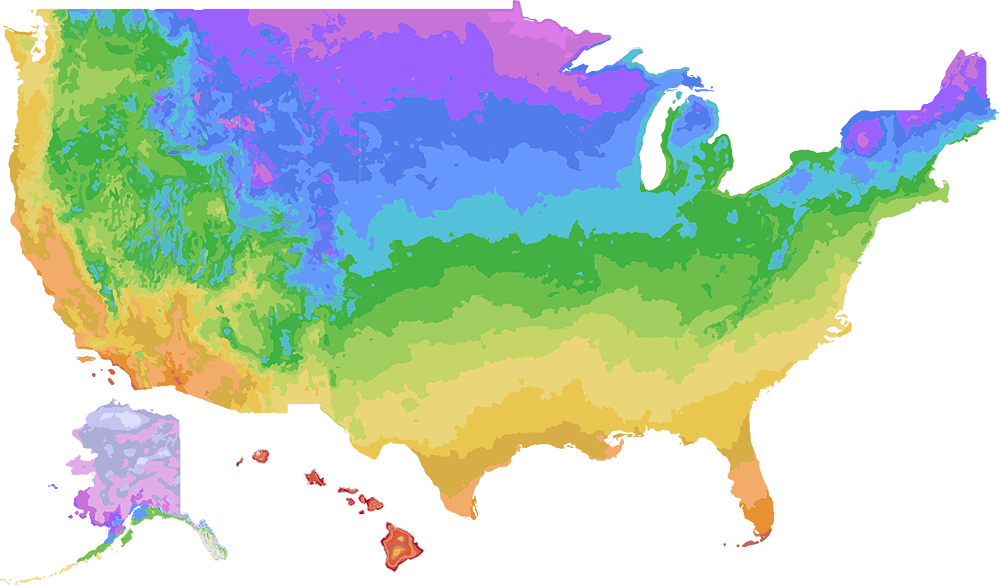4 Kinds of Plants Deer Avoid
There’s nothing worse than walking into your garden and finding that deer have devoured your favorite plants. Short of installing nine-foot-tall deer fencing or repeatedly applying repellants, there are few sure cures. The good news is that there are specific plant traits that deer generally avoid. These four kinds of plants are your best bet if you share your garden with Bambi and her friends.

It’s not your imagination. Finding plants that deer won’t eat is getting harder each year as more of their habitat becomes developed and their populations go unchecked in certain parts of the country. It’s not uncommon anymore to find deer in the backyards of homes in cities that have populations of 100,000 or more, as the deer take up residence on local golf courses and in metro parks.
There’s nothing worse than walking into your garden and finding that deer have devoured your favorite plants. Short of installing nine-foot-tall deer fencing or repeatedly applying repellants, there are few sure cures. The good news is that there are some types of plants that deer generally avoid—we’ll talk about them below.
Notice we said that deer “generally avoid” some plants. It seems as soon as a plant is labeled “deer proof” someone regales you with a story about a deer browsing their prize specimen of said plant. The only truly deer proof plants are those made from plastic or silk—and if they look real enough, deer may still try and take a nibble!
Also, keep in mind that deer palates vary regionally. What they typically leave alone in Tulsa may be their favorite snack in Toledo. Check with your local garden center or fellow local gardeners to see which plants are safest to plant around deer in your area.
FOUR TRAITS DEER HATE
1. Plants with an Herbal Scent
Ornamental herbs that we often just think of as pretty flowering perennials are usually safe to plant around deer. A few of the most common include: catmint (Nepeta), bee balm (Monarda), lavender (Lavandula), salvia/sage (Salvia), creeping thyme (Thymus), ornamental onion (Allium), Russian sage (Perovskia), ornamental oregano (Origanum), anise hyssop (Agastache) and yarrow (Achillea). There are a few types of annuals that share this trait including summer snapdragon (Angelonia), lantana, annual salvias and verbena.
These plants all have a notable herbal or citrus scent when their foliage is cut or crushed. Thankfully, deer and sometimes rabbits usually avoid such plants.
2. Plants with Fuzzy Foliage
Who likes a mouthful of cotton balls? Some types of plants have foliage that is covered in tiny hairs that make them feel fuzzy, scratchy or prickly in a deer’s mouth. If they are hungry enough, they will eat them anyway. More often, the deer will move on to more palatable plants with smooth, succulent leaves instead.
Some plants with fuzzy foliage that deer typically avoid include: heartleaf brunnera (Brunnera), lungwort (Pulmonaria), lamb’s ear (Stachys), deadnettle (Lamium), wormwood (Artemisia), blanket flower (Gaillardia), coleus (Plectranthus), butterfly bush (Buddleia), spirea (Spiraea) and viburnum.
3. Poisonous Plants
You might be surprised to know that some of your favorite foods and flowers are actually classified as poisonous or as an irritant if ingested improperly. Deer intuitively know which of these plants can make them sick or meet a worse fate, and they usually avoid them as a result. If you have small children or curious pets, you may want to avoid planting from this list of plants. If that’s not a concern but deer are, plant away!
Common edible plants that are poisonous or irritating if ingested improperly: those in the nightshade family including peppers, potatoes, eggplant, tomatoes and other less common plants like huckleberries and tomatillos.
Common non-hardy plants that are poisonous or irritating: angel’s trumpet (Brugmansia and Datura), tobacco plant (Nicotania), caladium, castor bean (Ricinus), lantana, oleander (Nerium), plus many types of houseplants.
Common hardy plants that are poisonous or irritating: daffodil (Narcissus), monkshood (Aconitum), bleeding heart (Dicentra), foxglove (Digitalis), spurge (Euphorbia), Lenten and Christmas roses (Helleborus), irises, milkweed (Asclepias), peonies (Paeonia), azaleas and rhododendrons, wisteria and yew (Taxus).
4. Plants with Fine Texture
When the goal is to fill your belly between sunset and sunrise, you go for the big ticket items first—those with plenty of succulent foliage, fruit or flowers. That’s why deer tend ignore plants with finely textured leaves like ornamental grasses or wispy flowers like baby’s breath. They would need to consume a whole lot of those plants to ease their hunger.
Here are some more finely textured plants that deer tend to leave alone: blue star (Amsonia), pinks (Dianthus), tickseed (Coreopsis), Jacob’s ladder (Polemonium), clematis, ferns, vinca, boxwood (Buxus), deutzia, forsythia, buckthorn (Rhamnus), false cypress (Chamaecyparis), juniper (Juniperus), Siberian cypress (Microbiota), potentilla, scotch broom (Cytisus), euphorbia and Texas primrose (Calylophus).
You may pay “deerly” if you believe these myths:
- Deer won’t touch my roses because they have thorns.
- Deer won’t eat my plants because they are native.
- Deer don’t browse evergreens.
- Deer won’t bother a particularly attractive plant because it is planted next to something poisonous.
- Deer won’t be brave enough to come up to my porch or patio to eat the plants there.
- Deer won’t be an issue in my garden because I have a dog.
Want to learn more?








